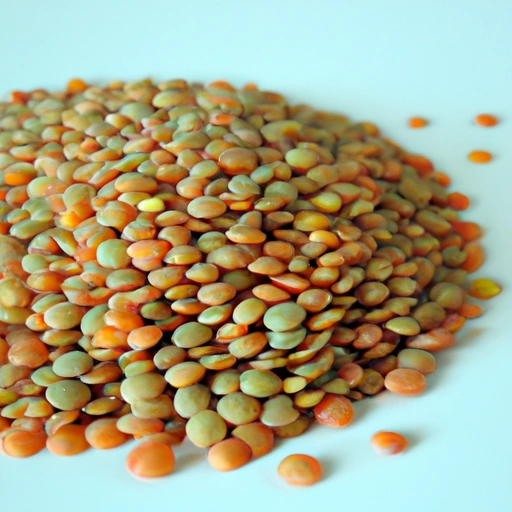Lentil
Description

Lentils are a type of pulse, part of the legume family, known for their lens-shaped seeds. They come in various colors, including brown, green, yellow, and red, each with its unique flavor and cooking time. Lentils are a staple ingredient in many cultures due to their versatility, nutritional benefits, and ease of cooking. They are sold whole or split and can be found in most grocery stores worldwide.
Common uses
Lentils are commonly used as a meat substitute, a thickening agent in soups and stews, and a protein-packed addition to salads, curries, and side dishes. They are also popular in vegetarian and vegan diets as a source of essential nutrients.
Nutritional value
Calories
A 1/2-cup (99g or about 3.5 oz) serving of cooked lentils provides approximately 115 calories.
Protein
That same serving size offers about 9 grams of protein, making lentils an excellent source of plant-based protein.
Fat
Lentils are low in fat, with less than half a gram per serving.
Carbohydrates
Lentils are rich in carbohydrates, with about 20 grams per 1/2-cup serving, most of which are complex carbs and dietary fiber.
Vitamins
Lentils contain B vitamins, particularly folate and thiamin, as well as vitamin B6.
Minerals
They are also a good source of minerals like potassium, iron, magnesium, and manganese.
Health benefits
Lentils are recognized for their health benefits, including improving heart health, aiding in digestion, and helping regulate blood sugar levels due to their high fiber content. The protein in lentils makes them an excellent option for muscle building and repair, while their iron content helps prevent anemia.
Potential risks
Lentils contain antinutrients like phytic acid, which can reduce the absorption of minerals. They also have lectins, which can cause digestive discomfort if lentils are not cooked properly. People with gout or kidney issues should consult with a healthcare provider before incorporating high-purine foods like lentils into their diets.
Common recipes
Lentil soup, Dahl, lentil salads, and lentil burgers are some of the many recipes that feature lentils as a key ingredient.
Cooking methods
Lentils can be boiled, stewed, or blended into dips and spreads. Unlike other legumes, they do not require pre-soaking, making them quick and convenient to cook.
Pairing with other ingredients
Lentils pair well with aromatics such as onions, garlic, and herbs, as well as with vegetables like carrots and tomatoes. They also complement grains like rice or quinoa and are enhanced by spices like cumin, coriander, and turmeric.
Summary
Lentils are a versatile, nutritious, and easy-to-prepare ingredient that can be a valuable addition to any diet. Their long history and vast use in global cuisines reflect their importance and benefits. Lentils offer a multitude of health benefits and can be incorporated into a variety of dishes, satisfying a wide range of palates and dietary needs.